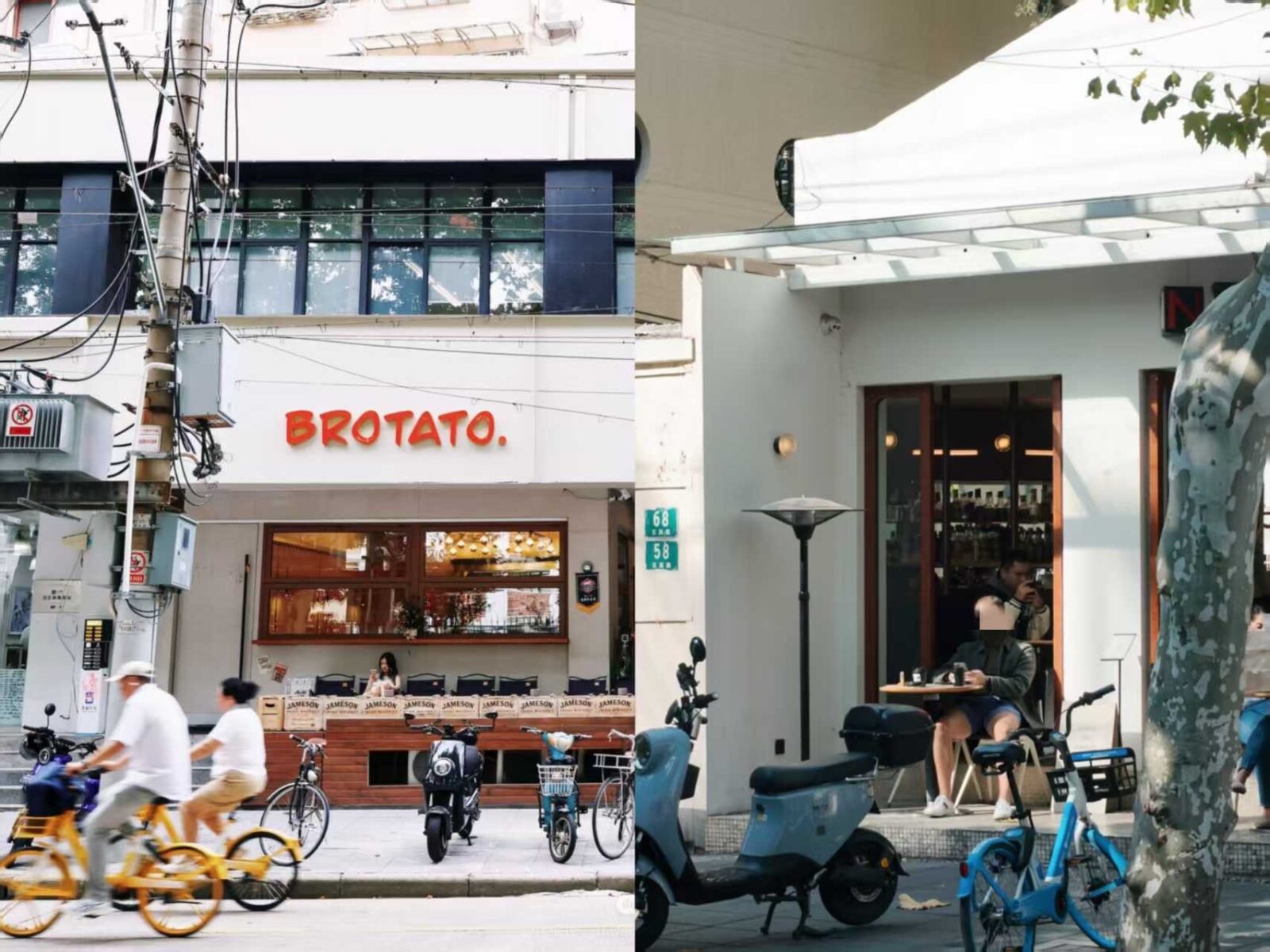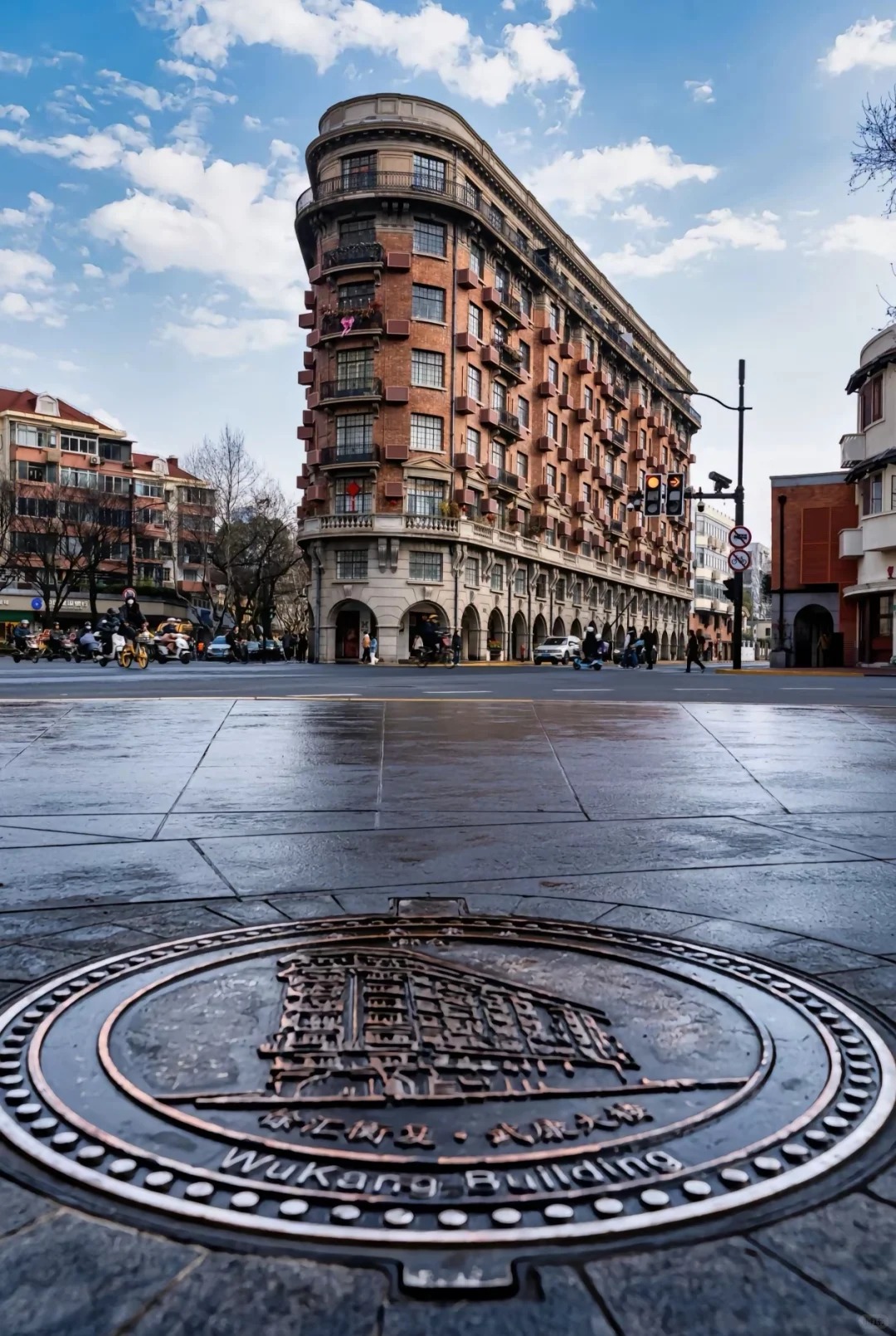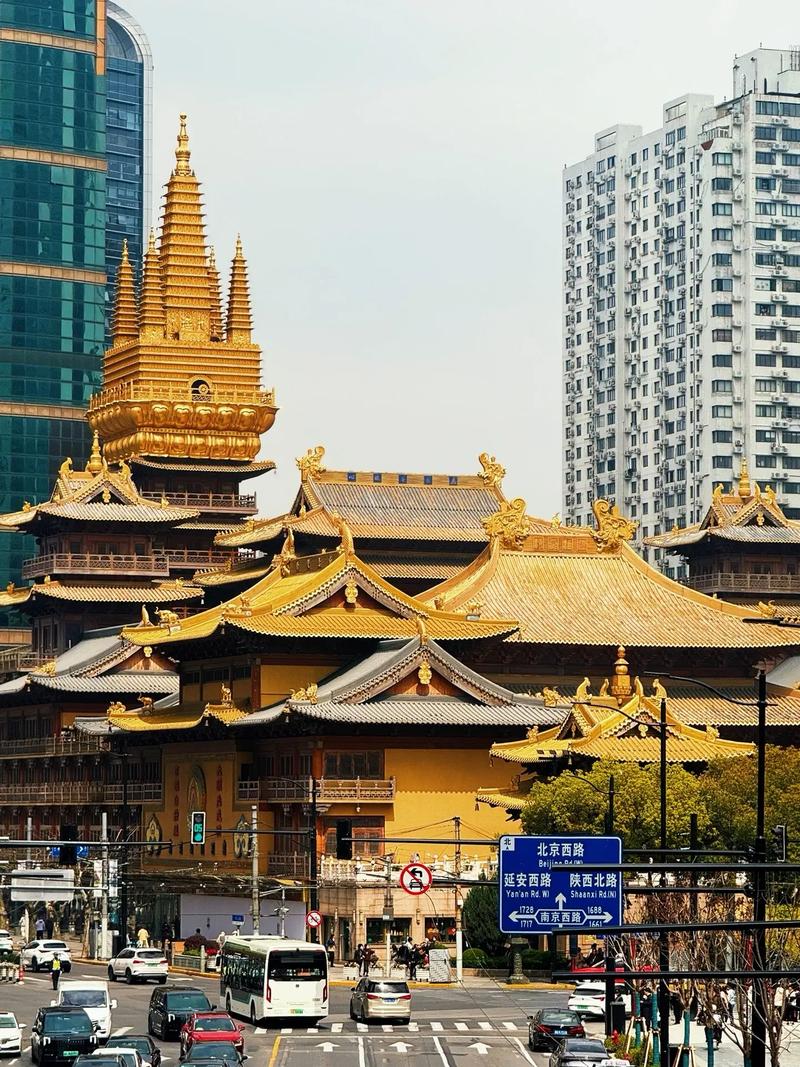Forget everything you’ve heard about Shanghai being all skyline and sparkle. At night, this city flips the switch and turns into something way more layered. One moment you’re sipping craft beer on a rooftop; the next, you’re slurping spicy noodles on a side street with the locals. Shanghai at night isn’t just a photo op—it’s a mood, a rhythm, and a whole scene you don’t want to miss. Whether you're into lantern-lit temples, underground bars, or slow walks by the river, this guide dives into 12 ways to really soak it in. Some spots are iconic. Others are the kind of places locals don’t post about—but always go back to.
Tips: Shanghai is not only interesting at night, but also has its own unique charm during the day. If you want to know more about the attractions and ways to visit, this detailed guide to Shanghai may help you.
Where can you enjoy Shanghai’s skyline after sunset?
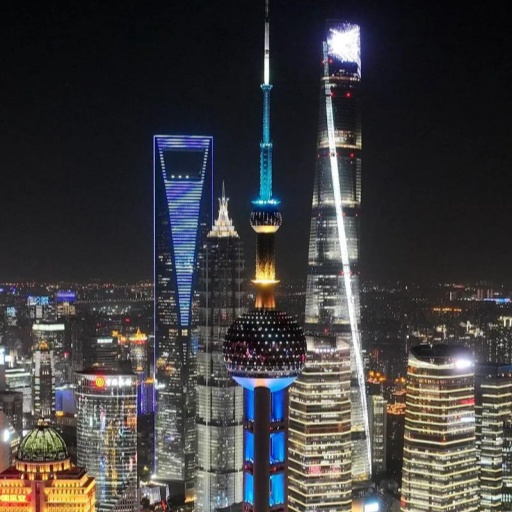
Three towers dominate the skyline
Take a relaxing night cruise on the Huangpu River
If you want front-row seats to the best view of Shanghai at night, hop on a cruise along the Huangpu River. No skyscraper climb, no tripod needed—just grab a seat on the deck and let the skyline come to you. These cruises run between ¥120–¥180, depending on boat type and time slot. You’ll drift between the Bund’s colonial glow and Pudong’s futuristic flash. It’s a 50-minute ride, but the photos and vibe? Totally worth it. You can book tickets directly on Ctrip—just search “Huangpu River Night Cruise.”
There’s something about being on the water that makes the whole city feel different. You’ll see couples snapping selfies, older locals quietly sipping tea, and kids pointing at the glowing Pearl Tower like it's straight out of a Marvel movie. The breeze cools things down, and the buildings look more alive reflected in the rippling water. It’s not just sightseeing—it’s part of the city’s rhythm. Boats depart every 30 minutes from Shiliupu Wharf or the dock near the Oriental Pearl. Most people prefer 7:30 or 8pm for the best lighting.
Pro tip? Sit on the upper deck for open-air views, and bring a jacket—yes, even in summer. Many cruises now include English audio guides too, so you’ll get some backstory on landmarks like Waibaidu Bridge or the Shanghai Tower. It’s an easy, chill way to soak up the full vibe of Shanghai at night without rushing anywhere. Just sit back and let the lights do the talking.
Head to the top: Best observation decks for night photos
Shanghai Tower is the tallest building in China and second-tallest in the world. Its observation deck sits at 546 meters, and the elevator shoots you up in under a minute. The design is sleek, almost sci-fi. Up top, you get a sweeping 360° view that captures not just the Bund and Pudong, but even far-off districts if the air’s clear. Entry costs around ¥180, and they offer English signage, touchscreen guides, and plenty of photo spots.
Next door is the Shanghai World Financial Center, aka “The Bottle Opener.” Its viewing deck is at 474 meters, and it’s famous for its transparent glass floor. You can literally look down between your feet and see the city below glowing like a circuit board. Admission is about ¥160, and while it feels a bit corporate, the views are unbeatable for photographers—especially for wide-angle shots of both riverbanks.
Then there’s the Jin Mao Tower, a more traditional design that rises to 420.5 meters. Its 88th-floor deck offers a golden-hued view that frames the Bund beautifully. Unlike the other two, this one feels more low-key and less crowded. Tickets are typically ¥120, and there’s a hotel bar (Cloud 9) just below the deck if you want to linger longer with a drink.
Not into official decks? You can still get the glow from above at places like Flair (Ritz-Carlton) or CHAR (Hotel Indigo). Both welcome walk-ins, and while drinks cost more—think ¥100–¥150—you’re paying for that skyline. Dress is casual-chic, and no one minds if you're just there for a cocktail and a photo. From up here, Shanghai at night doesn’t feel like a city. It feels like a dream with streetlights.
After soaking in Shanghai’s night charm, grab a bite to refuel — read Shanghai Late Night Food — Best Dumplings, Hotpot & Street Bites Open Past Midnight and get ready for it.
Is the Bund still worth visiting after dark?
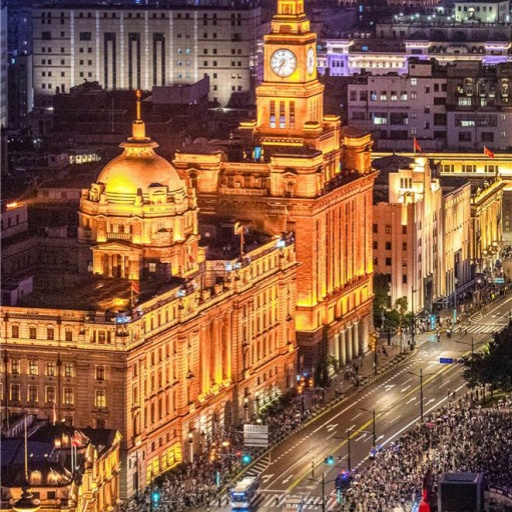
The Bund
History meets modern light show
The Bund at night isn’t just a postcard backdrop—it’s a conversation between old and new. On one side, you’ve got grand colonial buildings lit like jewelry boxes. On the other, futuristic towers blink across the river. Locals call this area “外滩,” and it’s where Shanghai’s past and future literally face each other. If you visit around 8pm, you’ll catch the skyline at its boldest—every light on, reflections dancing in the water, tourists gasping mid-photo.
Many first-time visitors think the Bund is just a quick photo stop, but hang around and it surprises you. You might hear street musicians playing Erhu under the Peace Hotel’s green dome. Or spot couples slow-dancing near the promenade steps. There's a strange stillness in the air, despite the city buzzing around you. The buildings—like the Customs House and the HSBC Bank—aren’t just pretty; they’re time capsules. The Bund’s story includes trade, war, jazz, even spies. And at night, the soft yellow lighting makes them feel almost sacred.
Don’t skip the river walk. Start from Chen Yi Square and stroll down to the ferry docks. Along the way, you’ll pass stone lions, brass plaques, and marble railings that have seen a hundred years of change. Locals love this path for late-night chats or solo thinking walks. Shanghai at night isn’t always loud—it can also be deeply reflective. And the Bund is where you feel that contrast most clearly: light and shadow, rush and calm, then and now.
Evening walks, street performers, and quiet corners
You don’t need a ticket or reservation to enjoy the Bund—just good shoes and a little patience. While the big skyline draws the crowds, it’s the small details that really stay with you. Like the smell of roasted chestnuts from a corner cart. Or a retired dancer practicing slow motion moves by herself. Or the buzz of a drone camera flying above tourists. These moments don’t show up on guidebooks, but they’re the heart of Shanghai at night.
Want to avoid the crowd? Skip the prime photo zone and turn into the backstreets. Try Dianchi Road or Yuanmingyuan Road behind the customs house. These quiet corners are full of old bank buildings, art deco apartments, and leafy sidewalks. There’s a low hum to everything—fewer tourists, more locals heading home or grabbing late snacks. If you’re into urban history, look for building plaques with QR codes. Some even offer audio tours that explain the architecture.
One underrated viewpoint? The riverside lawn near the Peninsula Hotel. Not many people know it’s public, but you can sit there, hear the waves, and watch the whole skyline glow without elbowing for space. This mix of openness and intimacy is what gives the Bund its magic. Shanghai at night doesn’t always scream—it sometimes whispers. And that whisper can be the most powerful part of your trip.
Where do locals really go at night in Shanghai?
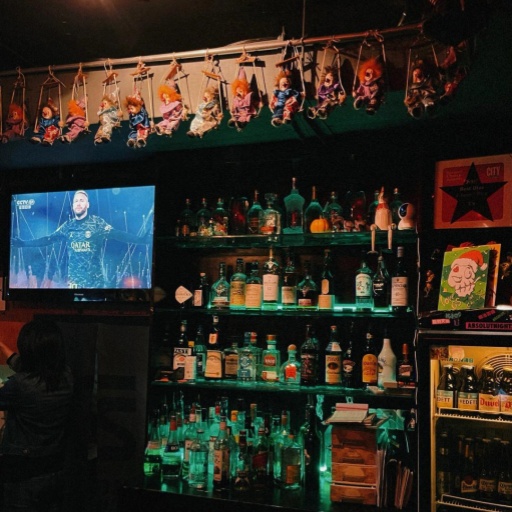
C’s Bar
The energy of Nanjing Road after sunset
Nanjing Road after dark is a full-blown sensory rush. Lights flicker, music blasts from stores, and the scent of street food fills the air. This isn’t a quiet walk—it’s neon chaos in the best way. Locals mix with tourists here, not just for shopping, but because this stretch feels alive. From People’s Square to East Nanjing Road, it’s about two kilometers of nonstop color and noise. You’ll see kids chasing bubbles, couples arguing over which milk tea spot to hit, and street performers pulling in crowds with Michael Jackson moves.
People often think of Nanjing Road as a daytime shopping zone, but at night it takes on a different vibe. Stores stay open late, and the atmosphere turns almost carnival-like. Foreign brands glow next to old-school Chinese signboards. There’s a kind of organized chaos that feels very Shanghai—Western and Chinese culture crashing into each other under LED skies. You might spend 15 minutes watching a group of dancers outside Forever 21, then turn a corner and find a calligraphy stall selling scrolls for luck.
And don’t skip the side streets. Walk just a block off the main drag and you’ll hit local gems—tiny noodle shops, late-night manicure bars, and hole-in-the-wall milk tea stands where high schoolers hang out past curfew. Shanghai at night thrives in the in-between. It’s not just about the lights; it’s about the people in motion. That buzzing energy? It doesn’t come from ads—it comes from everyone out there making the street their own.
Chill bars in French Concession and hidden rooftops
Shanghai at night isn’t all rooftop views and high-end cocktails. For locals—and expats who’ve been around—there’s a different bar scene tucked into the leafy lanes of the French Concession. It’s cozy, no-fuss, and totally foreigner-friendly. The bartenders speak English, menus are readable, and the vibe is more dive bar than designer lounge. These aren’t spots for selfies. They’re places where stories happen.
C's Bar is an underground legend—literally. Walk down into the graffiti-covered basement and you’ll find cheap drinks, loud music, and people from everywhere. The place is gritty, smoky, and proudly unpolished. Think dive bar meets student hangout. Beers go for around ¥30–¥40, and shots start at ¥20. It’s cash only, and nobody cares what you're wearing. People come to talk, smoke, laugh, and lose track of time.
Next up is The Shed, a sports bar with zero pretense and big Aussie energy. It’s great for watching late-night games (they stream rugby, football, and NBA), and the menu’s in full English. Burgers, wings, pool table in the back, and pitchers of beer from ¥100. You’ll meet solo travelers, English teachers, and regulars who’ve lived in Shanghai for years. Come here if you want beer, sports, and no-nonsense fun.
The Rooster sits in the middle of everything and somehow still feels chill. It’s all about outdoor seating, craft beers (¥40–¥60), and weekend brunch that turns into Sunday drinking. Staff are super friendly, and you won’t need any Chinese to order. Don’t miss their happy hour deals—they pour strong.
What cultural experiences can you find at night?
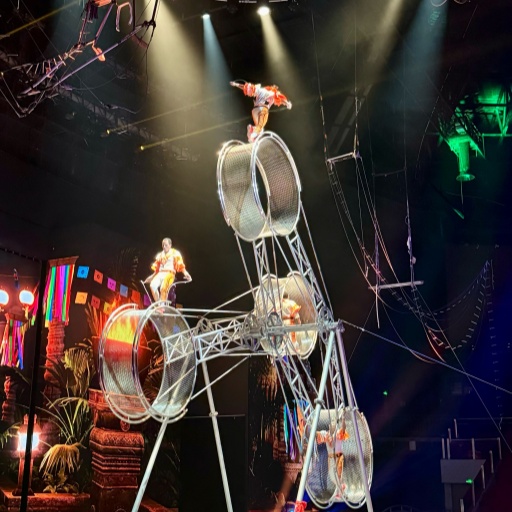
Shanghai Circus World
Watch jaw-dropping stunts at Shanghai Circus World
Shanghai Circus World isn’t just for kids. At night, it becomes one of the city’s most impressive cultural shows. The evening performance of ERA 2: Spirit of Shanghai blends martial arts, acrobatics, and multimedia projection into something that feels half tradition, half sci-fi. You’ll see performers leaping through spinning hoops, dancing midair on silk ropes, or flipping motorcycles inside a steel sphere. It’s the kind of show where the entire audience goes silent—and then bursts into applause. Tickets start around ¥280, and it's best to reserve ahead, especially on weekends.
What makes this show special isn’t just the stunts—it’s the storytelling. You’ll notice nods to old Shanghai cabaret, kung fu epics, and even Chinese mythology. The show’s visual language blends East and West, past and future, in a way that makes Shanghai at night feel like more than lights and bars. For foreigners, there’s no language barrier. The performance is non-verbal, and the emotions hit hard regardless. Plus, the venue is modern, air-conditioned, and easy to reach by metro (Line 1 to Shanghai Circus World Station).
If you're not into big stadium productions, the city offers smaller live shows too. Look out for community stages in Jing’an or Xujiahui parks, especially on weekends. You might stumble onto a group doing shadow puppetry or elderly singers belting out folk songs from the 1960s. Shanghai doesn’t push culture in your face. It lets you find it. Sometimes, that’s just more powerful.
Sip tea or play mahjong like a local
Not every cultural night out in Shanghai needs tickets or a spotlight. If you want to slip into something slower, head to a teahouse after dark. Places like Lao Shanghai Teahouse or Heji Teahouse welcome guests late into the night. You’ll find wooden chairs, old men reading newspapers, and endless pots of jasmine tea. The pace is different here. Conversations meander. Time stretches. It’s a place to breathe.
Some of these spots host spontaneous mahjong games. Locals slam tiles with flair, laugh loud, and sometimes invite strangers to join. Don’t worry if you’ve never played—they’ll teach you, or at least let you watch. The mix of clinking tiles and boiling water is like a lullaby for the city. For many Shanghainese, this is the real nightlife. No dancing. No noise. Just the rhythm of the city’s oldest habits playing out under low light.
Want a deep local feel? Try wandering into a neighborhood teahouse in Hongkou or Yangpu. These aren’t fancy, and the tea might be served in chipped mugs—but they feel honest. No Wi-Fi, no QR codes—just people. Shanghai at night isn’t only modern and fast. Sometimes, it's about slowing down and sitting still, right where life is happening.
Can tradition still be found in modern Shanghai nights?

Longhua Temple
Explore Yu Garden and Old Street after dusk
Yu Garden at night feels like walking into a living painting. The classical rooftops, red lanterns, and still ponds take on a dreamlike quality after dark. This isn’t just a tourist trap—it’s one of the last places in central Shanghai where old Suzhou-style architecture still breathes. As shops wind down and crowds thin, you’ll hear the soft splash of koi and temple bells ringing faintly in the air. The contrast with the nearby skyscrapers is unreal. Shanghai at night doesn’t get more poetic than this.
Head past the main garden to the Old Street area. That’s where you’ll find carved wooden storefronts, tea sets in dusty glass cabinets, and calligraphy scrolls hanging beside neon signs. It’s a strange but beautiful mix. Some shops stay open late selling mooncakes, embroidered slippers, and brush pens. If you’re lucky, you might stumble onto a lantern display near the Nine-turn Bridge. Most locals don’t come here to shop—they come for the feeling. For many, it’s a shortcut back to childhood.
Budget tip? Admission to the actual garden closes around 5pm, but the surrounding bazaar and Old Street are totally free to walk around at night. Best time to visit? After 7:30pm, when group tours clear out and lights come on. Bring a camera—but also take a few quiet minutes to just watch the reflections in the water. Shanghai at night isn’t just about motion. Sometimes, it’s about stillness that feels timeless.
Lanterns, temples, and night markets
In the middle of all the steel and glass, tradition still burns bright. You’ll see it in the red lanterns that light up temple gates. You’ll hear it in the chants from evening ceremonies at Jing’an Temple or Longhua Temple. Yes—temples stay open at night, especially during festivals or lunar calendar events. And Shanghai at night feels older in these spots. The incense hangs heavy. The shadows flicker. People light candles and bow, whispering wishes to gods of wealth, peace, and health.
Lunar calendar nights are special. On the 1st and 15th of each lunar month, certain temples hold extra rituals. Longhua Temple, the oldest in Shanghai, becomes a sea of incense smoke and murmurs. The temple's golden roofs glow in candlelight. You don’t need to be religious to feel it. Locals from all backgrounds come here—some to pray, some to pause. It’s less about belief, more about presence. Even the sound of a bell here feels like it stops time.
After temple hours, shift to night markets. You’ll find traditional ones in places like Dapuqiao or Pengpu. Unlike the modern malls, these markets are loud, messy, and full of character. Vendors sell everything from handmade fans to sugar paintings shaped like zodiac animals. It’s chaotic—but there’s heart in it. You won’t find flashy signs or corporate branding here. Just people doing what they’ve done for generations. And that’s the thread tying old Shanghai to now. It’s not gone—it’s just waiting for you after sunset.
